| Umělec magazine 2007/1 >> About BlacknessThe Destruction of the Guelman Gallery: the Truth is out There | List of all editions. | ||||||||||||
|
|||||||||||||
About BlacknessThe Destruction of the Guelman Gallery: the Truth is out ThereUmělec magazine 2007/101.01.2007 Alena Boika | commentary | en cs de |
|||||||||||||
|
On October 21, 2006 a dozen thugs ransacked an exhibition of Alexander Jikia and the offices of the Guelman Gallery. Dressed in leather clothes and wearing no masks, they acted methodically and silently. They put the employees against the wall and took away their phones. The destruction took all of ten minutes. Gallery owner Marat Guelman called it a scare tactic. They did not steal anything, but they beat the gallery owner mercilessly, smashed computers and office equipment, and damaged or destroyed 20 art works by Alexander Jikia whose exhibition had opened two days prior to the attack. The famous art critic Alexander Panov, who served as a legal witness in Marat Guelman’s case, was later beaten up, twice.
It was not the first time the gallery was attacked. In February 2003, two aggressive men burst into the gallery, during Avdey Ter-Oganian’s “Nonnormative Painting” exhibition. While Guelman himself is at a loss for words about who could have raided the gallery, the Moscow tusovka set are all abuzz about possible reasons. The He Himself Cooked It up version It is no secret that Marat Guelman commonly works with provocative forms of art work such as he did with the Russia-2 exhibition, a performance of distributing a list of a hundred alleged neo-fascists in response to the release of list of Russia’s enemies compiled in the heart of the so-called “patriotic camp,” and so on. The destruction of Guelman’s Kiev gallery is a case that has been somewhat forgotten after all this time, yet remains extremely ambiguous. This version has the right to existence, however, it doesn't seem correct – it is hardly believable that the famous and widely recognized gallery owner could feign the ransacking of his own gallery, one of the most successful, and does not need any promotion of this kind. It is even less probable that this complicated process of dramatization involved a clinic, where Marat went after suffering injuries including a broken nose. Although some people doubted the extent of the damage, he gained sympathy when people saw his injuries. Version: an Insult to the Power The incident was preceded by a striking story. London gallery owner Matthew Brown was detained by customs officials at Moscow’s Sheremetyevo Airport. He was on his way to England with art that he purchased from Guelman—pictures from the Blue Noses artists’ Masks Show. The pictures featured grotesque images of Vladimir Putin, George Bush, and Osama bin Laden. According to customs officials, the works could be qualified as insulting an official, which would be against article 130 of the Russian Criminal Code. It is funny that only now the authorities become interested in Blue Noses’ works. The “criminal” work is five years old and it had already been exhibited many times and published, including at “state-run expositions,” as Marat Guelman remarks. However, the fact remains. Matthew Brown returned home without the paintings. The artwork stayed in Moscow pending investigation. It was only two days that the well-organized assault at the gallery took place. Hence the version of revenge of the authorities is unavoidable. The version is neither possible to prove nor disprove without the help of government intervention. The Anti-Georgian version The theory that the attack was part of some agitation against people of Georgian origin also looks somewhat fishy. This is in spite of increasing hysteria in Russian society last autumn. The tension between the Kremlin and Georgian President Mikhail Saakashvili resulted in attacks against Georgians throughout Moscow in October. The government accused some companies owned by Georgians of violation of sanitary and other norms and deported hundreds of Georgians who, as the officials stated, did not have legal permission to stay in Russia. Artist Alexander Jikia was born in Tbilisi in 1963. Against the background of escalation of anti-Georgian state of public opinion somebody could compare his paintings and pictures with Borzhomi mineral water and Khvanchkara wines, which is unlikely, but, possible. However, the artist departed for New York in 1997 and now teaches design in Ankara. Before the described event, he had an exhibition at the ARTPLAY Design Center, where nobody destroyed his works. Alexander Jikia’s works are the most harmless of those exhibited by Marat Guelman during the last year. There is nothing even slightly hinting at political realities in them; the humor of Jikia’s pseudo-naive paintings and drawings follow the Russian cheap popular print tradition as part of European art culture. Extremism in Russia Gallery workers do not consider it improbable that the thugs belong to one of a number of fascist groups, and suggest that the assault could be concerned with the owner’s political activities. I don’t want to think that such destructions are becoming a habitual manner of threatening in Russia. However, it is sufficient to recall the incident at the Sakharov Center when the “Beware, Religion” exhibition was destroyed and the two fires in a row at the Falanster and Bilingua shops for intellectual literature that are known for their free opinions, to understand that the tendency of consolidation of forces in opposition to failed liberals is growing stronger. It is not known if the confiscation of works and the assault were a coincidence or if the assault had been instigated by the reports on the radio and the Internet about the confiscation at the airport. This year Guelman has gained a lot of enemies as a result of his public criticism of neo-fascists and nationalists. Now he is on the list of “Russia’s enemies,” which Russian neo-fascists have circulated on the Internet. Anna Politkovskaya, a journalist shot in the lobby of her house on October 7, also was on the list along with many human rights activists. Politkovskaya became famous for her strict criticism of the Kremlin and its policy in Chechnya. Guelman also infuriated orthodox fundamentalists with his criticism of their influence on public policy and with exhibitions of works, which they consider antireligious. Moreover, Guelman, who had long been cultivating relations with the Kremlin, has been increasingly criticizing Putin. A brief reference: Marat Guelman created one of the first private art galleries in Moscow (now the Guelman Gallery) in 1990. The gallery started out working with young artists and beginners, including Valery Koshlyakov, Dmitry Gutov, Alexander Vinogradov, Vladimir Dubosarskky, Oleg Kulik, Anatoly Osmolovsky, and the AES + F Group. Many have since become leaders of the Moscow art scene, representing Russia at the biggest world forums of contemporary art. Many of his projects were of a political nature, for example, the Kompromat exhibition of 1996 or the Russia-2 project of 2005, which urged artists to create a “parallel” positive image of the country. Early in 1997, he was an organizer of a campaign opposing the building of Zurab Tsereteli's monument to Peter the Great in Moscow. In 1995, he ran for political office in Russia’s Duma representing the Boundary Generation Block party, was a co-owner of the Effective Policy Foundation along with Gleb Pavlovsky, and he was an image consultant to politicians including Alexander Lebed. In 1999, he headed electoral headquarters of the Union of Right Forces at the parliamentary elections. From June 2002 to December 2003, he was a deputy general director of Russian ORT TV station, curator of analytical direction and PR service. He simultaneously worked as the image-consultant of a new left political party. According to Gleb Pavlovsky, president of the Effective Policy Foundation, there are essentially two versions of the assault at Marat Guelman’s gallery. “First, it is a strategy of increasing the tension in the country. This strategy is seen in a number of recent assaults, massacres, either against Jews or Moslems,” Pavlovsky remarked. “This could be done by those who want the situation to intensify and explode in Russia.” A second version, Pavlovsky suggests, may be concerned with frequent accusations against Guelman and his exhibitions and actions “from different fundamentalists and extremists.” “It is hard to say whether it is their own initiative or if someone moderates them. There have been a lot of outrageous racist attacks against Marat. So, this may be concerned with the undoubtedly real Moscow racist underground.” But no representative of any nationalist organizations claimed responsibility for the assault. For example, Dmitry Demushkin, leader of the Slavonic Union, said that “unfortunately our people did not take part,” and one of the leaders of the Movement against Illegal Immigration said, “these are not our methods.” On October 31, the gallery recommenced its work after Alexander Jikia’s exhibition had been restored and reopened. (author used materials of gif.ru, guelman.ru)
01.01.2007
Recommended articles
|
|||||||||||||
|
04.02.2020 10:17
Letošní 50. ročník Art Basel přilákal celkem 93 000 návštěvníků a sběratelů z 80 zemí světa. 290 prémiových galerií představilo umělecká díla od počátku 20. století až po současnost. Hlavní sektor přehlídky, tradičně v prvním patře výstavního prostoru, představil 232 předních galerií z celého světa nabízející umění nejvyšší kvality. Veletrh ukázal vzestupný trend prodeje prostřednictvím galerií jak soukromým sbírkám, tak i institucím. Kromě hlavního veletrhu stály za návštěvu i ty přidružené: Volta, Liste a Photo Basel, k tomu doprovodné programy a výstavy v místních institucích, které kvalitou daleko přesahují hranice města tj. Kunsthalle Basel, Kunstmuseum, Tinguely muzeum nebo Fondation Beyeler.
|







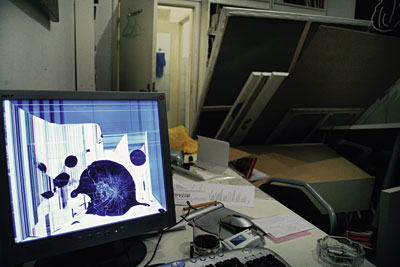
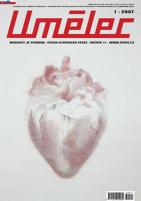













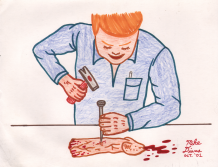




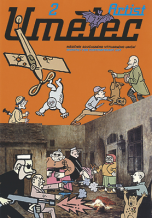
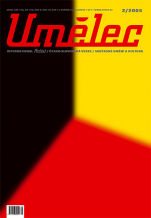
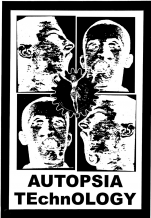



 New book by I.M.Jirous in English at our online bookshop.
New book by I.M.Jirous in English at our online bookshop.
Comments
There are currently no comments.Add new comment